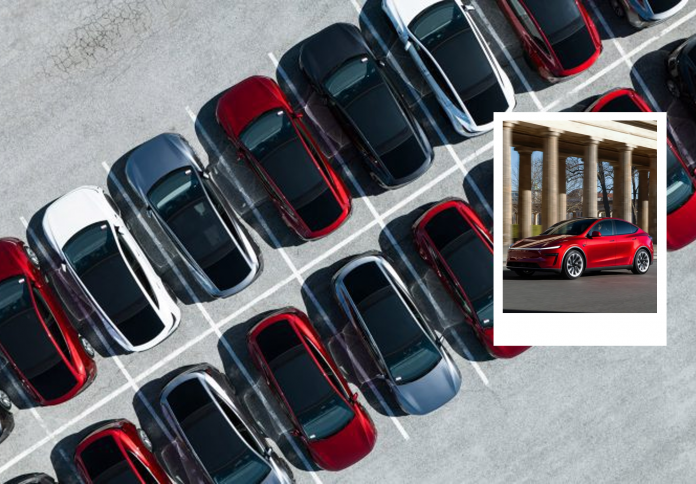Tesla has officially launched its long-anticipated Robotaxi service in Austin, Texas, offering semi-autonomous rides in Model Y vehicles to a select group of users. While the fleet is small and still supervised by in-car monitors, the debut marks the first real-world test of Elon Musk’s vision for an AI-driven ride-hailing future.
A cautious rollout of a bold promise
On June 22, Tesla introduced a fleet of robotaxis on the streets of Austin, Texas, in what may be the most public-facing step yet in the company’s efforts to redefine urban transportation. With a service window from 6 AM to midnight and limited to select areas of the city, the rollout is currently invite-only, giving early access to influencers and select Tesla supporters.

The vehicles in question are the 2025 Model Y electric sedans, each branded with a gold “Robotaxi” insignia on the front door. Despite the futuristic name, these initial rides are not fully autonomous. Tesla has confirmed that a human safety monitor is present inside each vehicle for the duration of the trip, and some form of remote monitoring is likely, though details remain vague.
$4.20 rides and social media buzz
Among the first to experience the Robotaxi were Tesla investor Sawyer Merritt and retired US Navy commander turned YouTuber Chuck Cook. Both took to X (formerly Twitter) to share footage of their test rides, helping Tesla generate the kind of online attention it has long thrived on. The cost? A symbolic $4.20 per ride—a cheeky nod to a figure Musk has repeatedly used in the past.
Tesla’s decision to limit access to influencers and supporters is strategic. It allows the company to control the narrative in these early stages while building hype for what it hopes will be a transformative mobility service. While the cars are not yet operating without human oversight, the company is billing this as a major step forward toward full autonomy.
A long road to self-driving

Elon Musk has been teasing the arrival of robotaxis since at least 2019, often promising timelines that have since shifted. While the vehicles deployed in Austin are not yet fully self-driving, Musk and Tesla maintain that a future with no steering wheels or pedals is still within reach.
Tesla’s robotaxi ambitions were further formalized last year with the unveiling of two prototype vehicles—the 20-seat Robovan and the compact, two-door Cybercab. Neither of these models are included in the current Austin fleet, but they offer a glimpse of what the company envisions for a driverless future. According to Musk, these vehicles could see rollout as early as 2026 or 2027.
The current pilot is not just a test of technology, but also a test of public reaction, regulatory response, and operational logistics. It is, in many ways, a dress rehearsal for a service Tesla hopes to scale nationwide and potentially globally.
Austin as a proving ground
Tesla’s choice of Austin for the launch is strategic. The city has emerged as a hub for technology and innovation, hosting the annual SXSW festival and increasingly attracting major tech companies. Tesla itself relocated its headquarters to Austin in 2021 and maintains strong ties to the city.
Austin is also home to another player in the autonomous ride-hailing space: Waymo, a subsidiary of Alphabet (Google’s parent company). Waymo began operating in the city earlier in 2025 and has already established services in Phoenix, San Francisco, and Los Angeles. Tesla’s entry into the same market sets up a quiet showdown between two of the most visible names in self-driving technology.
Notably absent from the streets of Austin, however, are other rivals such as Amazon’s Zoox, which remains in development. For now, Tesla and Waymo are the only major contenders actively testing autonomous mobility in real-world urban settings.
Hype, hope, and healthy scepticism
Despite the excitement surrounding the launch, not everyone is convinced. Technology journalist Paris Marx, writing for Dezeen, suggested that the timing of the announcement may be more about narrative control than technological readiness. “Musk made the big robotaxi announcement because he needs a reason to keep people interested in Tesla,” Marx argued, voicing a sentiment shared by others wary of Musk’s long history of ambitious, delayed timelines.
That scepticism isn’t entirely unwarranted. Tesla’s Full Self-Driving (FSD) software has faced criticism for safety issues and overpromising capabilities. The presence of human monitors in the Austin pilot is a reminder that, despite the branding, these vehicles are not yet capable of fully autonomous operation.
Still, the symbolism of the Robotaxi’s launch is powerful. It signifies Tesla’s continued push into a future where cars drive themselves, schedules are algorithmically optimized, and the traditional taxi experience is transformed into a digital service accessible via smartphone.
What comes next?
With the first fleet already making its rounds and a broader rollout hinted for the next few years, Tesla is betting big on its vision of autonomous mobility. Whether the technology can truly scale, and how it performs in more complex urban environments, remains to be seen.
For now, Tesla has made a tangible move toward its robotaxi promise—albeit a cautious one. Whether it succeeds will depend not only on software and sensors but also on public trust, regulatory support, and the company’s ability to deliver on yet another ambitious Elon Musk vision. As Musk wrote on X following the launch: “Culmination of a decade of hard work.” But in the world of autonomous vehicles, the real test is only just beginning.










